Facing off against strong pickleball players can seem daunting at first. They’ve got the power, the precision, and often, the experience to dominate the court. But don’t let their prowess intimidate you! There are strategies you can employ to not only defend effectively but also to turn the tables in your favor.
Understanding the nuances of your opponent’s gameplay and adapting your defense can make all the difference. Whether it’s mastering the art of the soft game, improving your positioning, or developing a keen sense of anticipation, there’s always a way to level the playing field. Let’s dive into some tactics that can help you hold your ground against even the most formidable pickleball adversaries.
Mastering the Soft Game
When it comes to leveling the playing field against strong pickleball players, mastering the soft game emerges as a crucial strategy. This aspect of play involves finesse, control, and a strategic mindset rather than relying solely on power. The soft game is primarily played from the non-volley zone or the kitchen, where players engage in a delicate dance of dinks, soft volleys, and precise placements to outmaneuver their opponents.
One of the key benefits of the soft game is it forces power players out of their comfort zone. Strong opponents often prefer fast-paced exchanges where they can dominate with their strength. By slowing down the game, players can neutralize this advantage and create opportunities to take control of rallies. It’s not just about making the ball over the net but placing it in such a way that it becomes difficult for the opponent to execute a powerful return.
- Practice Dinks: Consistent practice of dinks, those gentle, arcing shots just over the net, can significantly improve a player’s soft game. Aim for precision and try to keep the ball low to make it difficult for the opponent to attack.
- Work on Soft Volleys: Soft volleys require a delicate touch and good paddle control. The goal is to block or redirect the ball gently over the net without giving the opponent an easy slam. This also helps in keeping the play within the kitchen area.
- Improve Placement: Placement is more important than power in the soft game. Work on placing shots where the opponent isn’t, especially targeting their backhand or creating awkward angles. This minimizes their ability to return with force.
- Enhance Anticipation: Being able to predict the opponent’s moves allows players to position themselves better and makes executing the soft game more effective. Watching for visual cues and patterns in the opponent’s play can give insights into their next move.
- Build Patience: The soft game is a test of patience as much as it is of skill. Rushing points or overreaching can lead to mistakes. Players must stay calm, wait for the right moment, and resist the temptation to engage in a power battle.
Improving Your Positioning

When facing strong pickleball players, positioning can make or break your defense. It’s not just about where you stand, but also about how you move and react on the court. Key to enhancing your positioning is understanding the concept of court awareness. This means always being mindful of your location in relation to the net, your opponent, and the boundaries of the court. Effective positioning allows you to cover more ground, respond to your opponent’s shots more efficiently, and execute your game plan more effectively.
One aspect of improving positioning involves adopting the split step. This small hop or bounce that players do as their opponent hits the ball allows for a quicker reaction time. By incorporating the split step into your movement, you’re more prepared to move in any direction, enabling you to reach difficult shots that strong opponents are likely to send your way. It’s a simple technique but crucial for staying on your toes, quite literally, and drastically improves your ability to defend against aggressive plays.
In addition to the split step, practicing lateral movement is pivotal. Many players, especially beginners, focus too much on moving forward and backward, neglecting side-to-side movement. Mastery of lateral movement ensures that you can cover the width of the court effectively, essential for countering strong players who can place their shots with precision. Drills that emphasize sideways movement, such as shuffle steps or side lunges, can significantly enhance your court coverage.
Another critical aspect of positioning is anticipating your opponent’s shots. This doesn’t just mean guessing where they’ll hit the ball next but involves reading their body language and paddle position. Over time, attentive players can begin to predict their opponent’s moves with greater accuracy, allowing for preemptive positioning adjustments. While anticipation is partly an innate skill, it can be honed through practice and keen observation during match play.
Finally, always remember the significance of resetting to the center of the court after each shot. The center provides the most balanced position to defend against any return, giving you the best chance to respond effectively. This principle of always moving back to a central position is vital, especially after you’ve been pulled wide by an opponent’s shot.
Developing a Keen Sense of Anticipation
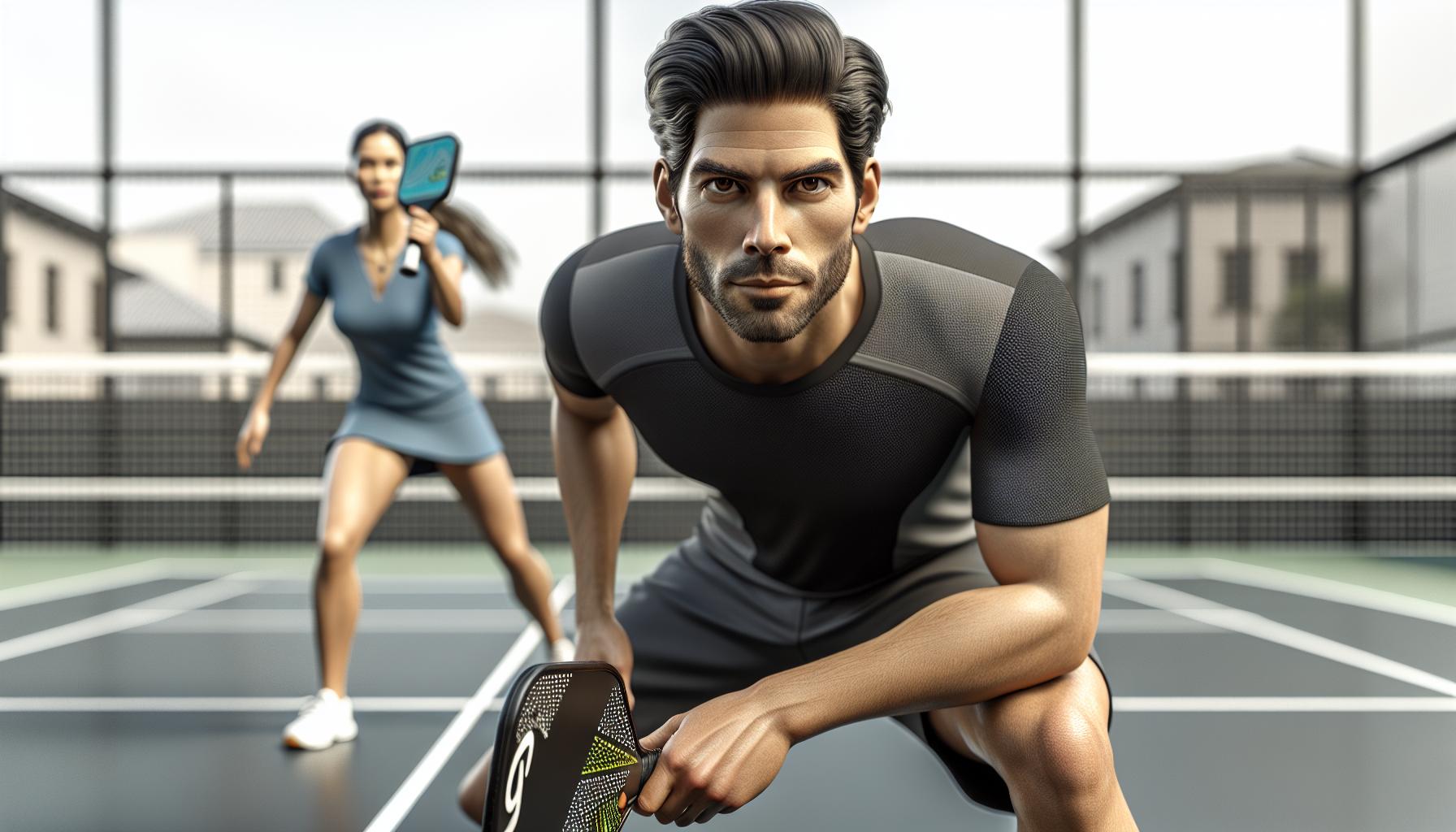
Developing a keen sense of anticipation is pivotal when facing strong pickleball players. Anticipation allows players to react more swiftly and accurately to their opponent’s moves, gaining a crucial advantage in fast-paced exchanges. It involves reading cues from the opponent’s body language, paddle position, and the ball’s trajectory. This skill can dramatically transform a defensive position into an opportunity for control and, ultimately, victory.
One key aspect of anticipation is focusing on the opponent’s paddle as they prepare to hit the ball. The angle of the paddle, the position of their feet, and the way they’re facing can often predict where the ball is headed. By paying attention to these details, players can begin to move even before the ball is struck, shrinking the court and making it harder for the opponent to find open spaces.
Another important factor is understanding the common patterns of play. Most players have preferred shots and sequences they rely on, especially under pressure. By recognizing these patterns, players can anticipate and intercept balls more effectively, disrupting the opponent’s game plan. This insight requires careful observation and experience, as well as studying the tendencies of various players over time.
Practicing with drill exercises specifically designed to improve anticipation is also beneficial. Drills that simulate game situations, requiring quick decision-making based on subtle cues, can enhance a player’s ability to anticipate. These drills can be as simple as reacting to balls directed randomly across the court or as complex as responding to strategic plays executed by a coach or playing partner.
Incorporating video analysis of matches is another valuable tool for developing anticipation. Watching and analyzing games, focusing on how players react to different situations, helps in understanding the visual cues that precede certain shots or strategies. This analysis not only improves anticipation skills but also aids in strategic planning by revealing the effectiveness of various tactics against strong opponents.
By cultivating a keen sense of anticipation, players can significantly improve their defensive game. It’s not just about reacting to the ball but predicting where it will be, allowing for better positioning and more effective returns. As anticipation skills grow, players will find themselves more comfortable and confident on the court, ready to face strong opponents with a renewed strategic mindset.
Utilizing Effective Shot Selection
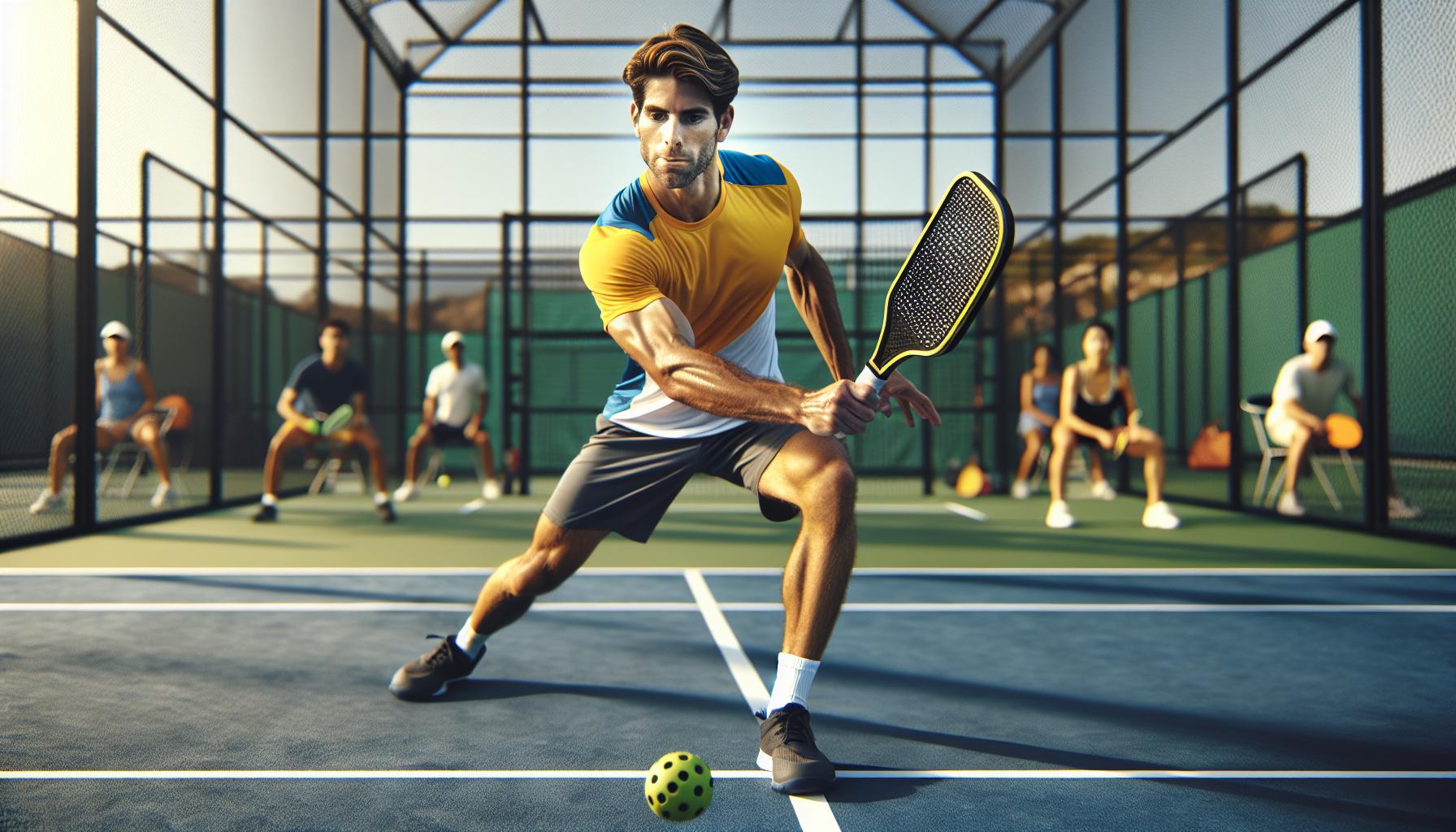
In the face of strong pickleball opponents, one strategy that cannot be overstated is Utilizing Effective Shot Selection. This tactic not only puts pressure on the opponent but also conserves the player’s energy by making each shot count. Effective shot selection involves choosing shots that are not only hard for the opponent to predict but also place them in a defensive position.
To achieve this, players must first understand the array of shots available in their arsenal. From soft, well-placed dinks to powerful baseline drives, each shot serves a specific purpose and outcome. Players should consider factors such as their position on the court, their opponent’s current position, and both players’ strengths and weaknesses when selecting a shot.
Key Shots for Defense
There are several key shots in pickleball that are particularly useful for defense:
- Dinks: A soft shot that lands in the non-volley zone, forcing the opponent to move forward and possibly opening up the court for a more aggressive follow-up shot.
- Lobs: When executed correctly, a lob can move the opponent away from the net and buy time for the player to reset their position.
- Drives: Fast, low shots that can push the opponent back and potentially result in a weak return.
Each of these shots can be used strategically to maintain control of the game and keep strong opponents on their toes.
Strategic Placement Over Power
Often, amateur players make the mistake of equating effective shot selection with sheer power. However, seasoned players know that strategic placement of the ball is far more critical. Placing the ball in difficult-to-reach areas of the court can create more opportunities for scoring points. For example, hitting a shot into the opponent’s backhand corner, especially if it’s their weaker side, can be an effective strategy.
Adapting to Opponent’s Gameplay
Another key aspect of effective shot selection is the ability to adapt quickly to the opponent’s gameplay. Strong opponents are likely to adjust their strategies throughout the match. The ability to read these adjustments and counteract with smart shot choices is crucial. Observing patterns in the opponent’s play and anticipating their moves can help in selecting the most effective shots to counter their strategy.
Exploiting Weaknesses in Opponent’s Strategy
When facing strong pickleball players, one effective method to gain an advantage is by carefully observing and exploiting any weaknesses in their strategy. This doesn’t mean taking unfair advantage, but rather, using keen observation to spot opportunities where one’s own strengths can best counteract the opponent’s weaknesses.
Firstly, players should pay attention to their opponent’s footwork. Sometimes, even the strongest players have subtle inconsistencies in their mobility or struggle with shots that force them to move in ways they’re uncomfortable with. For example, a player might show a strong preference for forehand shots, always positioning themselves to use that stroke. In such cases, deliberately aiming shots to their backhand side can disrupt their rhythm and create scoring opportunities.
Identifying Patterns and Habits
Every player, irrespective of their level, tends to develop certain patterns and habits over time. These can range from always serving to a particular area of the court to using a specific sequence of shots when under pressure. It’s crucial for opponents to:
- Observe these patterns early in the game
- Develop strategies to disrupt them
For instance, if a player notices their opponent consistently attempts a drop shot following a deep drive, they can anticipate this move and position themselves accordingly to return the shot more aggressively.
Adjusting Strategy Mid-Game
Adaptability is key when attempting to exploit an opponent’s weaknesses. Strong players often realize when their strategies are being countered and will attempt to adjust their gameplay. It’s important for a player to be one step ahead:
- Constantly assess the effectiveness of the current strategy
- Be willing to change tactics if the opponent adapts
This might mean switching from a defensive play to a more aggressive approach or vice versa, depending on what will most effectively exploit the opponent’s current state of play.
Applying Pressure Strategically
One common weakness among many players, including advanced ones, is handling pressure in critical moments of the game. Players can exploit this by:
- Keeping the game close, ensuring the scoreline applies psychological pressure
- Increasing the pace of the game at crucial junctures to force errors
- Employing unpredictable shot sequences to keep the opponent guessing and mentally engaged
By applying pressure strategically, players can force errors from their opponents or cause them to revert to less optimal patterns of play that can be more easily countered.
Conclusion
Mastering the art of defense against strong pickleball players isn’t just about having good reflexes or powerful shots. It’s about outsmarting your opponent with strategic positioning, unpredictable shot selection, and continuous adaptation. By focusing on these areas, players can turn the tables and even dominate the game. Remember, every opponent has weaknesses and patterns that can be exploited. Staying observant, adaptable, and strategic in your gameplay will not only enhance your defensive skills but also your overall performance on the court. So next time you face a formidable pickleball player, keep these strategies in mind and watch your game elevate to new heights.

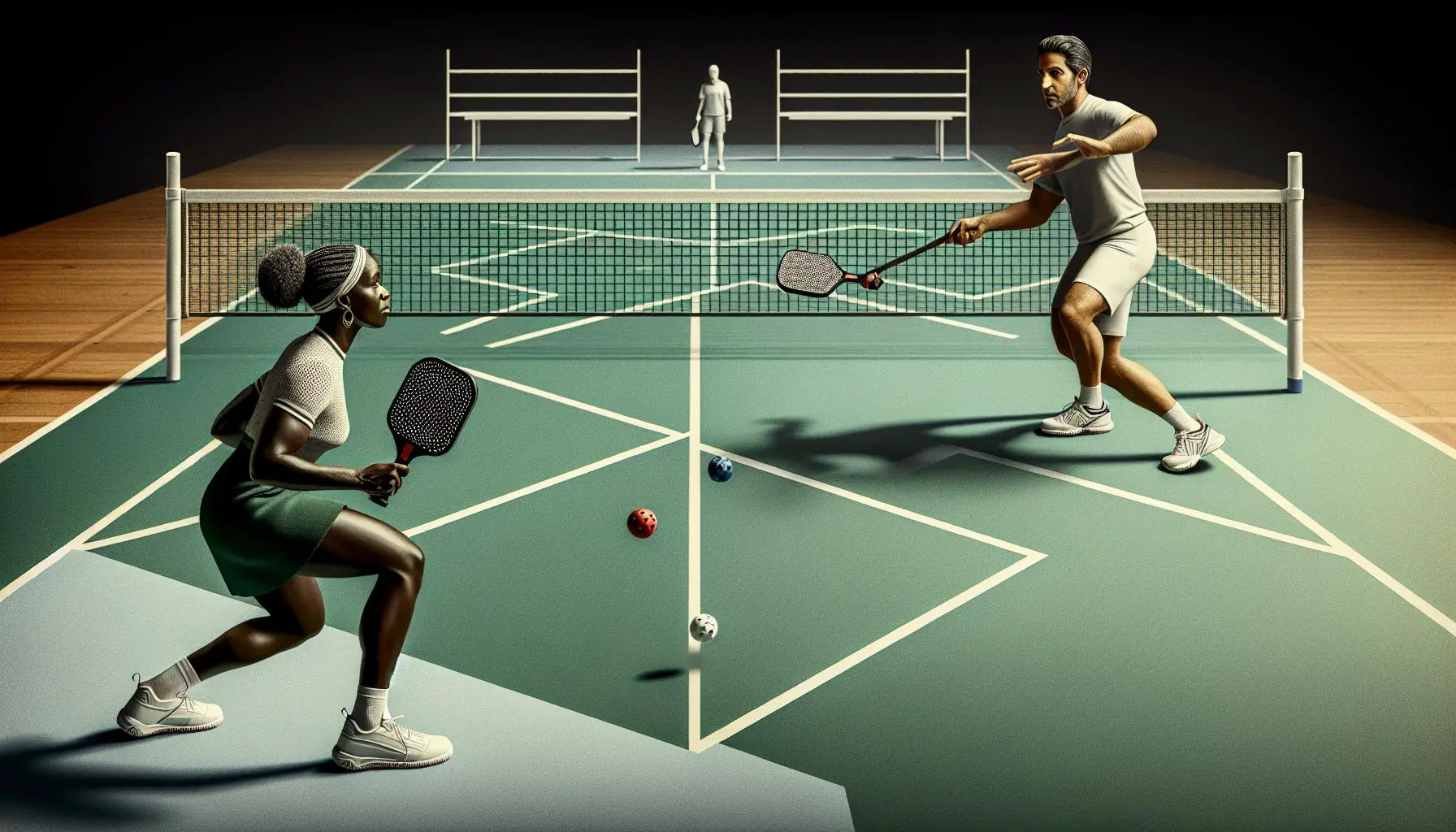









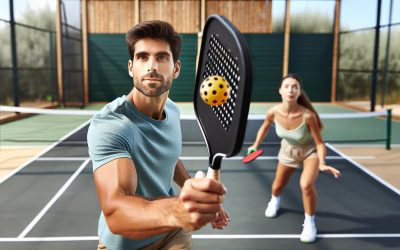
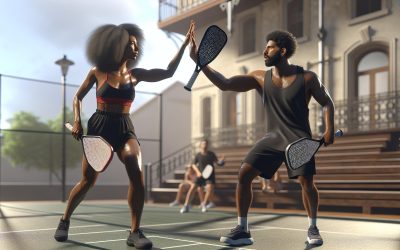

0 Comments